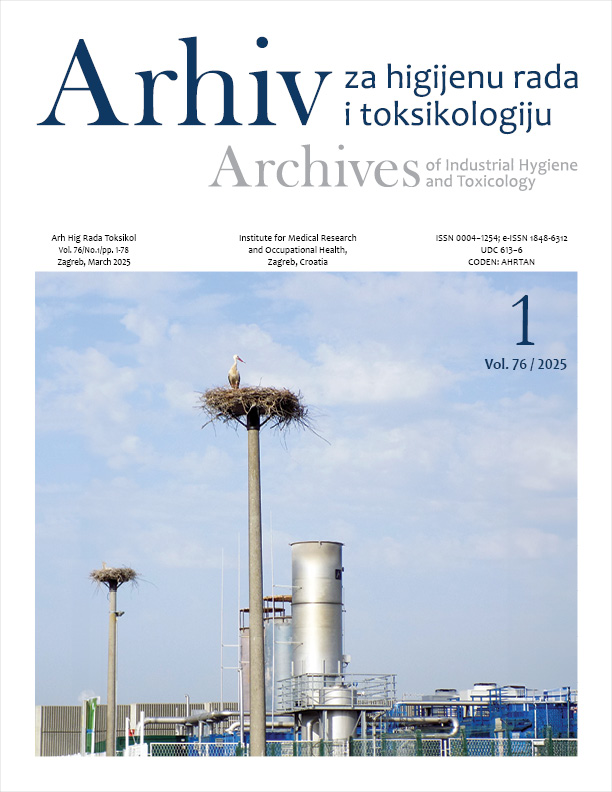Occupational injuries and associated factors among cement factory workers in the city of Chlef, Algeria
DOI:
https://doi.org/10.2478/aiht-2025-76-3929Keywords:
cement mill, cross-sectional study, falls, hands, feet, machinery, OSH training, personal protective equipment, safety practices, workplace accidentsAbstract
Even though accident rates in cement industry tend to be higher than in other manufacturing sectors and significantly contribute to overall worker disabilities and illnesses, they are reported poorly. The aim of our cross-sectional study was to assess occupational injuries and associated factors among cement factory workers in the city of Chlef, Algeria using a questionnaire distributed to 200 workers who agreed to participate in the study. We found that 53 participants working in a cement mill (26.5 %) reported having 64 occupational injuries, which mostly affected their hands (44 %) and feet (38 %). Machinery accounted for 39 % of all injuries, while falls accounted for 27 %. Multivariate analysis revealed that work in a quarry, lower education, and longer working years were significantly associated with higher injury rates. Long-term exposure to risks, rather than just inexperience, highlights the need for a reassessment of ongoing safety training and monitoring for experienced workers. Future research should also explore how organisational factors such as workload, work hours, job stress, and the state of machinery contribute to the risk of occupational injuries. An approach combining quantitative and qualitative data from workers and management across cement plants in Algeria and the region could provide an even more comprehensive view of occupational risks and safety practices and help contextualise these findings for policy improvements.
Downloads
Published
Issue
Section
License
Copyright (c) 2025 Said Djaballah, Fatima Merouchi, Nahla Mosetfai, Abdelhak Belahcene, Abdelmoumene Hechifa

This work is licensed under a Creative Commons Attribution 4.0 International License.














